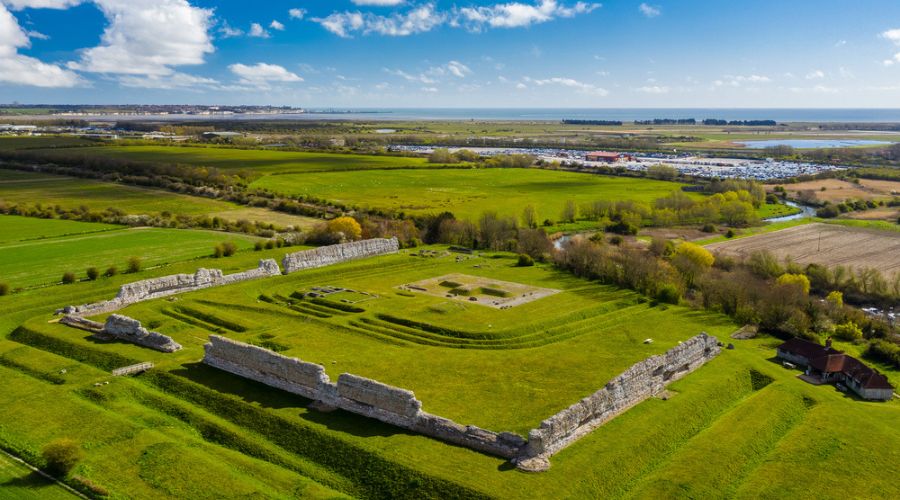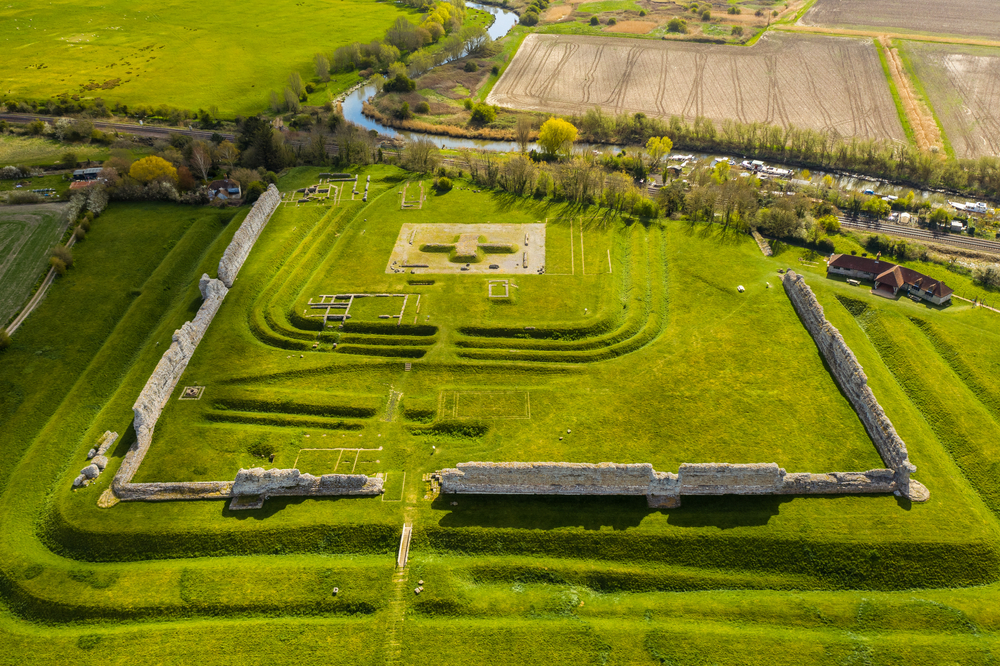Concerns raised that solar farm in Kent may cause ‘serious harm’ to ancient Roman site
26th February 2024
Kent residents are campaigning against plans to set up a solar farm, which could cause “serious harm” to one of Britain’s most important Roman sites.

Plans to take 84 hectares of arable farmland out of production and build a solar farm that should generate 49.9MW of energy, enough to power 15,000 homes, have been met with resistance due to potential damage to a Roman fort.
Among those who are against the proposals is TV historian Mary Beard, who has been battling the controversial proposals for the project in Richborough, near Sandwich.
However, Ms Beard is not as enthusiastic as the developer. She shared the link to the planning application and posted on X, formerly Twitter:
Kent County Council archaeology officer Ben Found has also raised concerns that the solar farm could cause serious harm to the ancient fort.
Serious harm
Local residents shared a dozen more objections against the solar panel farm. Among those concerned is officer Found, who warns that the plans could cause “serious harm” to the ancient Richborough Roman Fort.
Talking to the media, Mr Found said: “The impact of the scheme on the setting of the Roman site of Richborough is a major consideration.
“We recommend that the views of Historic England are sought on the impact of the proposals on the setting of the scheduled monument. We think the harm to the monument is serious. Further intrusive evaluation works are required before the application is determined.”
Richborough once hosted a huge Roman fort, town and amphitheatre. It was the first permanent Roman settlement in Britain after the invasion by Emperor Claudian in 43 AD.
The wall of the fortress, the remains of earthworks, and the amphitheatre remain visible.

Net zero by 2030
The developer, Statkraft, said that the farm will contribute to Dover District Council’s plans for the district to be net zero by 2030.
A Statkraft spokesperson said: “We recognise the significance of the Fort, and have carried out assessments that have found no evidence or archaeological record of Roman activity on the site of the proposed solar farm.
“However, further studies will take place, and if significant archaeology was discovered, mitigations would be put in place to conserve the history of the site. After listening to feedback from the local community and following advice from heritage experts, we’ve reduced the maximum height of solar panels, and increased their distance from the amphitheatre to 400 metres.
“We’re also including a nature conservation area, which will be more in keeping with how the landscape near the fort looked, before it was farmed.”
The planning application reads: “The development would contribute to local and national ‘Net Zero’ targets with an export capacity of up to 49.9 Megawatts (MW) of renewable energy.”
Any solar farm producing 50 megawatts or more needs development consent from the Secretary of State for Energy Security and Net Zero. That 49.9 MW refers to the maximum amount of power it could produce in any given moment while running at maximum efficiency, not over a period of time.
Read more planning articles.
